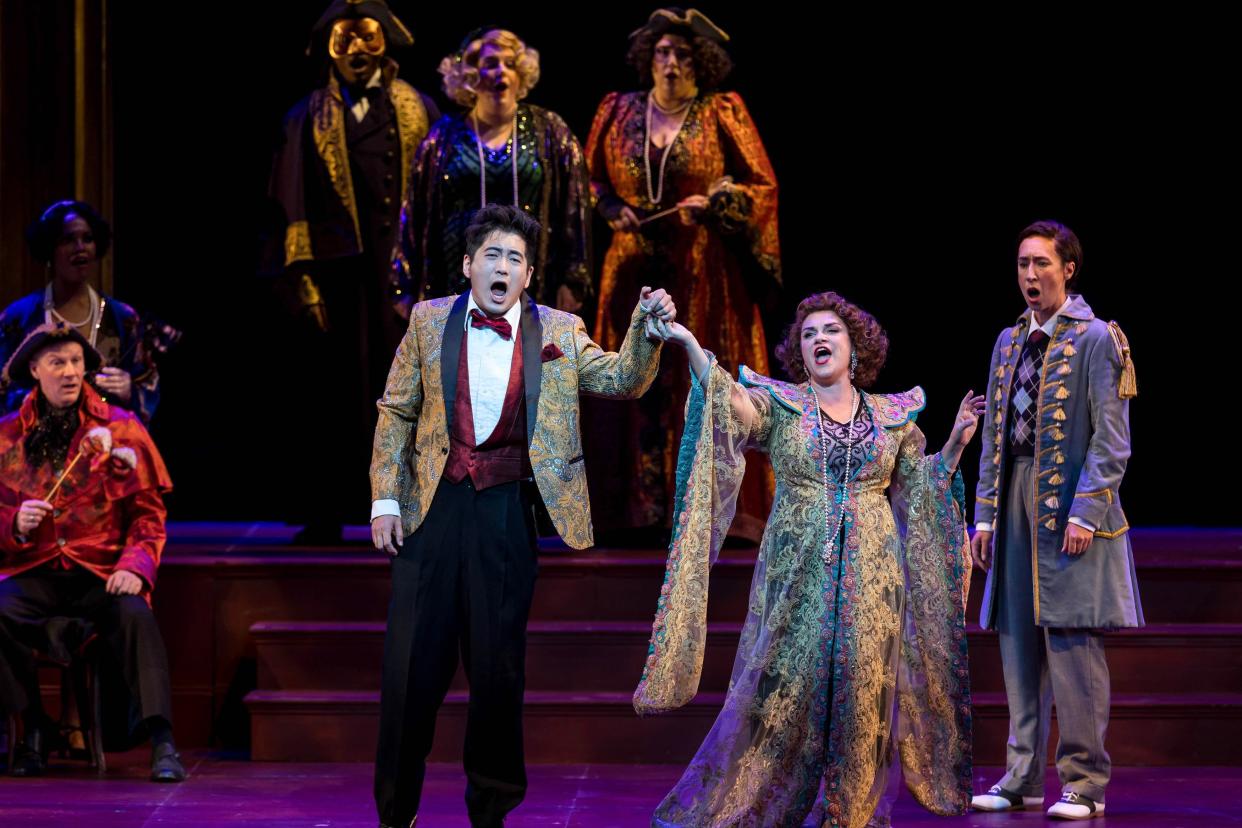Splendid singing lifts PB Opera's "Hoffmann"

Palm Beach Opera continued its 62nd mainstage season on Friday with a performance of “The Tales of Hoffmann,” by Jacques Offenbach, at the Kravis Center. Before the performance began, there was an air of change in the audience as several substitutions to the cast and orchestra were announced, attributed to illness and other factors. James Barbato, director of artistic administration, introduced the evening’s performance.
The opera begins in a restaurant setting, with several massive walls of shelving filled with wine bottles, reminding the audience that “The Tales of Hoffmann” would not be complete without beverages. Opera often utilizes copious amounts of alcohol as props or as a dramatic catalyst. In case the audience was not aware of this fact in “Hoffmann,” pieces of the walls remain throughout the performance to remind them.
Emily Fons is a superb mezzo-soprano voice in her role as Nicklausse and the Muse of Poetry. Fons’ opening aria, “Voyez la sous son éventail” showed her dramatic versatility and presence on stage. Zachary Nelson, in the role of the Four Villains, gave a rousing performance of villain Dr. Lindorf’s aria “Dans le roles d’amoureux langoureux.” Every baritone loves to play a bad guy, and Nelson really hits his stride in his portrayal of Act I villain Coppélius, adding physical twitches to his performance as if his body simply could not contain the villainy.
Tenor Kang Wang gave a powerful performance in the role of Hoffmann. He had immaculate French diction, and sang the difficult aria, “Il était une fois à la cour d’Eisenach” with comedic emphasis, leading the chorus on the German pronunciation of the ach-laut on the word, “Eisenach.” In many performances of this aria, the tenor tends to ignore the emphasis and just sing the aria, relying on the chorus to interpret the pronunciation. Wang’s performance of this aria was very refreshing and enhanced the drama, drawing attention to the fact that this French-language opera is making fun of German pronunciation.
Wang took care to communicate every word of the text beautifully in a wonderfully even tenor voice. He is an amazing actor, seeming to know intuitively if the energy dragged in a scene of extended bel canto, and single-handedly drummed up a chorus that was getting bogged down with sedate staging by moving freely on stage and checking in with each member. A mention here, too, of principal horn substitute Patrick Milando, who had a beautiful solo line during one of the tenor arias.
Kathryn Lewek was radiant as the Four Heroines. Her beautiful soprano voice conveyed refined elegance and richness of tone. “Les oiseaux dans la charmille,” also known as “The Doll’s Aria,” is considered one of the most difficult arias for soprano with its staccato coloratura and infinite high notes. This aria is always an audience favorite, particularly since the character of Olympia is portrayed as a mechanical doll that runs out of steam and has to be “wound up” again to continue. Lewek received enthusiastic applause throughout her performance for every aria sung.
The barcarolle duet, “Belle nuit, ô nuit d’amour,” in Act III was glorious between Lewek, now Giulietta, and Fons as Nicklausse. David Stern expertly conducted a smooth and refined orchestra for the evening’s performance.
This article originally appeared on Palm Beach Post: First-rate singing makes PB Opera's 'Tales of Hoffmann' special

